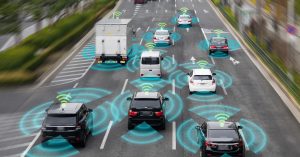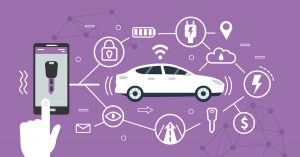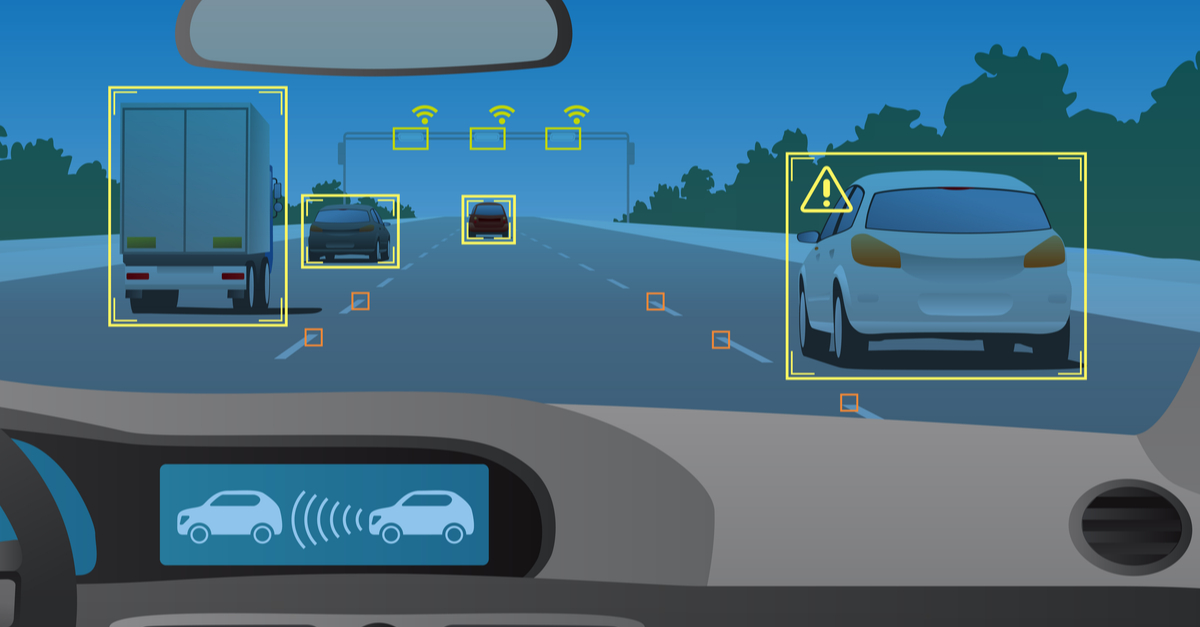Estimated reading time: 2 minutes
The Automative industry has comes a long way and it keeps on trucking forward, pun intended. From hybrid and electric cars that stray away from gasoline and other fossil fuels, we’ve pushed into connected cars and self-driving vehicles. But what are connected cars?
A Connected Car allows the user of the vehicle to connect devices to other devices or vehicles surrounding them. The sharing and obtaining of information via mobile broadband, Wi-Fi or Satellite Communication Technologies within the IoT networks. Cars are connected in two ways: embedded and tethered. Embedded vehicles operate thanks to a built-in antenna and chipsets, but tethered vehicles make use of the hardware that enables drivers to connect to their vehicle, take BlueTooth-smartphones for example. These tethered drivers can play music and take calls from their devices, through their automobile. 
V2I (Vehicle to Infrastructure): This is when car can notify the driver about the surrounding infrastructure, such as upcoming traffic congestion, construction sites, and accidents.
V2V (Vehicle to Vehicle): This works to inform users about its location to eliminate the likelihood for accidents and relieve any congestion.
V2C (Vehicle to Cloud): In this case, internal sensors monitor car conditions (tire pressure). They then send that data to the cloud, where it is diagnosed and manufacturers can update a car’s software internally and externally, without a driver’s input.
V2P (Vehicle to Pedestrian): This works to notify other road users about people on the road, especially those with disabilities.
V2X (Vehicle to Everything): The exchange of data between the vehicle and other infrastructural items, such as, road signs, traffic lights, etc.,
Driving Safer for all
 Connected cars can help lower insurance premiums. Connected technology and sensors help manufacturers better understand your driving habits. Just think about frequent braking and acceleration frequencies. Insurance companies can take this data and utilize it to provide better driving incentives. Manufacturers can also take notice of various ways to build a safer vehicle for the general consumer, making improvements where necessary.
Connected cars can help lower insurance premiums. Connected technology and sensors help manufacturers better understand your driving habits. Just think about frequent braking and acceleration frequencies. Insurance companies can take this data and utilize it to provide better driving incentives. Manufacturers can also take notice of various ways to build a safer vehicle for the general consumer, making improvements where necessary.
Advanced Driver Assistance Systems
Sensors and cameras work to monitor overall road conditions and also enhance drivers’ performance characteristics. Internal Sensors will work to monitor real-time speeds around you, available parking spots, an oncoming presence of high beam lights, and so much more. External sensors can detect lane change and departure notifications, forward collisions, pedestrian collisions, and much more as well. These capabilities are constantly evolving. 
Telematics Systems can work to assist drivers in better navigating their way through town with GPS systems and real-time data exchange (weather alerts and conditions) while driving through unknown territories. This is responsible for overall vehicle performance, which comes full circle with preventing accidents around us.
At the end of the day, vehicles are getting smarter and it’s likely driverless and aware cars are in our future. From keeping you and your passengers safe, to notifying you on available parking spots at the shopping mall, connected cars are the key to a better experience for drivers everywhere. Connected Cars are our future.

